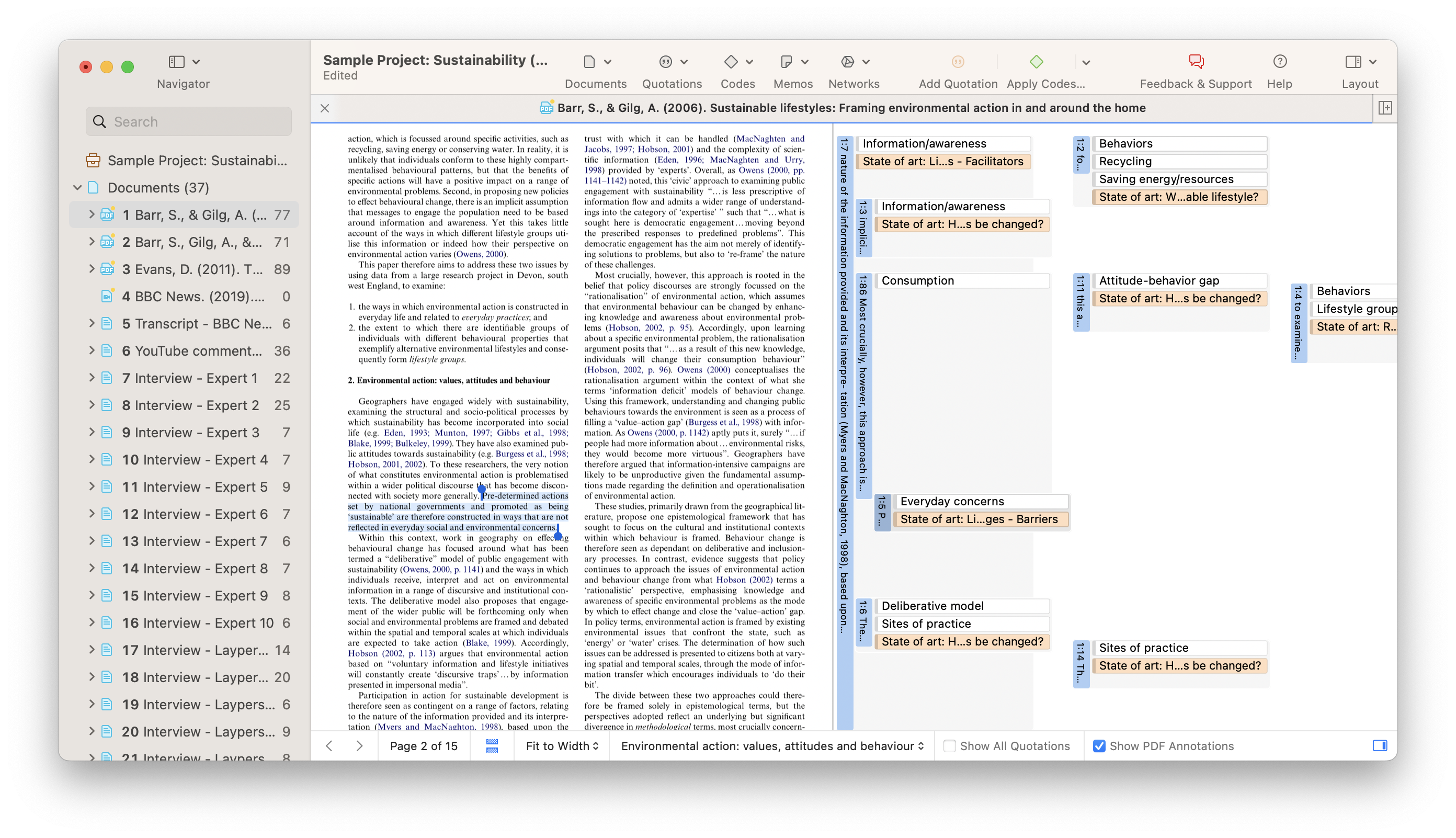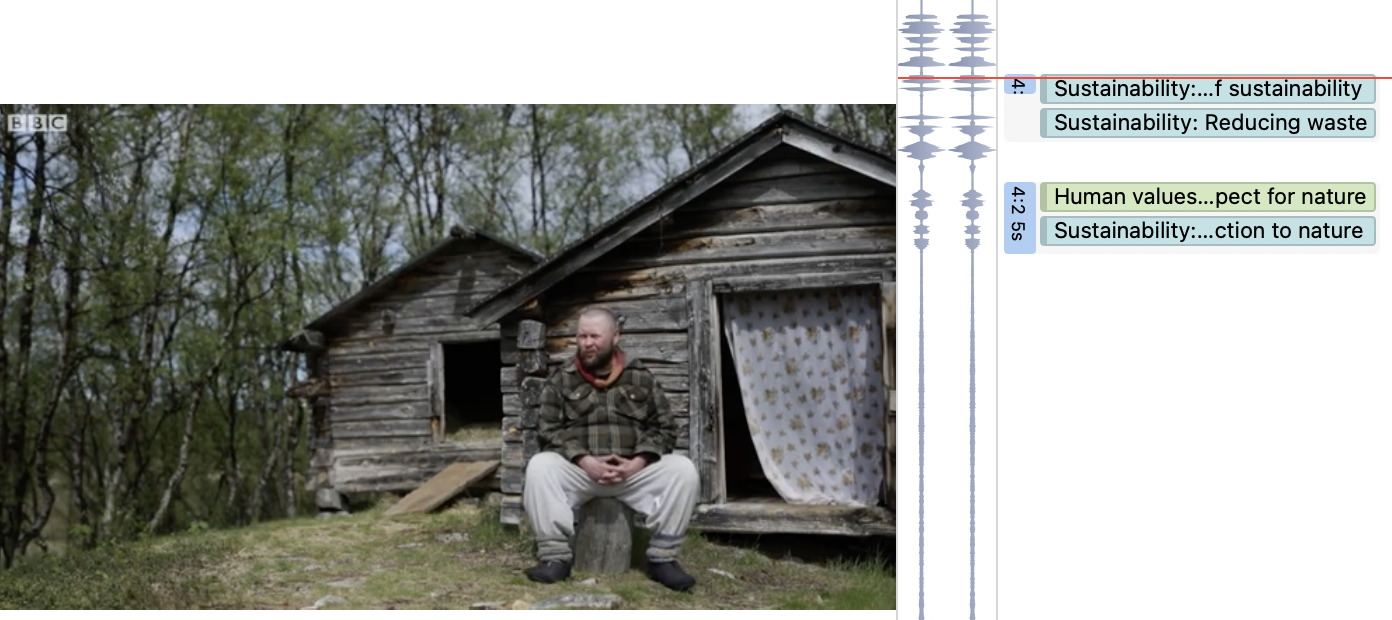- Introduction and overview
- What is qualitative research?
- What is qualitative data?
- Examples of qualitative data
- Qualitative vs. quantitative research
- Mixed methods
- Qualitative research preparation
- Theoretical perspective
- Theoretical framework
- Literature reviews
- Research question
- Conceptual framework
- Conceptual vs. theoretical framework
- Data collection
- Qualitative research methods
- Interviews
- Focus groups
- Observational research
- Case studies
- Surveys
- Ethnographical research
- Ethical considerations
- Confidentiality and privacy
- Bias
- Power dynamics
- Reflexivity
- How to cite "The Ultimate Guide to Qualitative Research - Part 1: The Basics"
Qualitative vs. quantitative research: Methods & data analysis
It might be easy to get bogged down in a "qualitative vs. quantitative data" debate, particularly when quantitative and qualitative research seem like very different things. However, both qualitative and quantitative data have their uses in research. Hence, researchers need to know what each approach has to offer before deciding which research approach and methods are best for them.
Over time, your research might rely on both qualitative and quantitative data. It's important not to treat one as more important or better than the other. Instead, it will benefit your research if you know when and how to use both forms of data to address your research inquiries.

Quantitative data
Quantitative data refers to any numerical data that can be used in statistical analysis or experimental research.
Researchers in quantitative research often collect data and conduct analysis to make generalizable conclusions about a particular phenomenon or subject. Survey researchers can sample a portion of a population and assert whether the survey results are indicative of the perspectives of the whole population.
Collecting quantitative data
Generally, quantitative data collection methods are more straightforward than their qualitative data counterparts. Suppose your research question involves measuring foot traffic around a city. In such a project, a researcher could place volunteers at selected places and have them count how many times people cross a street in their view.
The volunteers' counts make the quantitative data needed to answer the research questions. Making assertions about the foot traffic in different places is a relatively simple task, given that the numbers are easily collected and readily available for comparison.
Forms of quantitative data
Quantitative data collection relies on structure and a clear understanding of what the numerical values mean to the research. Quantitative researchers can readily take a spreadsheet of test scores, for example, to generate descriptive statistics and inferential statistics. The shape of that spreadsheet (e.g., rows and columns) and its content (e.g., numerical data) ultimately make analyzing quantitative data feasible.
Limitations of quantitative data
Some phenomena cannot be reduced to mere numbers. For example, quantitative data may tell you the value of a particular product, but it faces significant challenges in helping explain a product's inherent beauty or effectiveness.
Such concepts can be difficult for quantitative data to define. After all, what is beautiful to someone will be less so to someone else, and vice versa.
Quantitative research may also face limitations in measuring people's perspectives. Survey research often relies on Likert scales or rating scales asking respondents to rate something on a numerical scale (e.g., from one to five or one to ten).
However, is one respondent's idea of a "4" on a five-point scale the same as another’s idea of a "4" on this same scale? Moreover, subjective concepts are especially difficult to capture with numerical data.
Qualitative data analysis
Qualitative research tends to look at the detail of a phenomenon rather than its numerical value. Qualitative research methods allow for theoretical development or exploration of a relatively unfamiliar phenomenon.
Think about a beautiful song. It might be beautiful because of the melody, singer, lyrics, or perhaps some combination of these and other factors. Collecting quantitative data on each aspect (e.g., "Give the melody of the song a score between one and five") might allow for some statistical analysis of a song.
However, what exactly does someone mean when they give a high rating for a song's melody or lyrics? Do they mean the melody is relaxing, inspiring, or something else? Quantitative approaches alone are insufficient in allowing researchers to determine what people think is a "beautiful melody."
Coding qualitative data
Qualitative research relies on methods like interviews to explore social phenomena beyond the use of numbers. ATLAS.ti lets researchers code qualitative data, summarizing large sets of information more succinctly so that gathering insights becomes easier.

When someone speaks at length about a song's melody being "relaxing," a researcher can apply the code "relaxing melody" to an entire segment of text in ATLAS.ti. That way, analyzing the data means looking at brief codes instead of lengthy paragraphs or pages where the meaning might be unclear.
Developing theoretical insights
Qualitative analysis can also prompt us to look at a phenomenon from new and different angles. A researcher may conduct in-depth interviews at places where individuals think a song is beautiful, like at a live concert.
The findings may not fit our prior understanding of a beautiful song, meaning quantitative research wouldn't likely capture it. Statistical analysis might have difficulty reaching a reliable conclusion since different people might have different definitions of what makes a beautiful song.
As a result, the potential for qualitative research to further develop theory cannot be understated, particularly when it allows researchers to document new insights that quantitative methods might miss. While the qualitative research process can be daunting, it has the potential to provide more detail than a simple statistical analysis can.
Forms of qualitative data
Qualitative studies often draw from the following data collection methods:
- surveys or questionnaires
- in-depth interviews
- focus groups
- observations
- document collection

This is not an exhaustive list, as any unstructured data that can be organized might be considered qualitative data.
What is especially important is that qualitative data is not confined to text. Most forms of information can be analyzed for more insightful discussion. ATLAS.ti allows researchers to code major forms of qualitative data, including images, audio, and video. With the structure provided by coding, researchers can identify recurring themes and patterns in all forms of qualitative data.

Limitations of qualitative data
Unlike quantitative data, which is often readily available in spreadsheets, qualitative data tend to lack an easily defined structure that facilitates data analysis. In addition, interpreting non-numerical data can be challenging, while clear formulas exist that researchers can follow to compare quantitative values.
Moreover, in semi-structured interviews or focus groups, researchers may ask follow-up questions that can't easily be predicted. An interesting answer may lead to deeper questions to search for more in-depth insights.

The need for the interviewer to pursue deeper answers can impede the organization of data into neat rows and columns. However, it is important to organize the data so that different meanings that emerged across participants or data sources can be assessed. Researchers often need to take time to reorganize their data to facilitate interpretation.
Moreover, interpreting non-numerical data is a significant challenge for qualitative researchers. The relative quantitative value of different things can be relatively easy to interpret.
An example
If someone takes the temperature of New York and the temperature of Chicago on the same day and gets two different values, asserting that one city is warmer than the other would be uncontroversial. After all, one need only get a numerical value representing the temperature in each city to come to a fairly straightforward conclusion.

However, people may disagree about what makes a city interesting or exciting. To take from our example about music, people may even disagree about whether the visual or performative elements of music should be considered. Thus, the researcher needs to clarify the potential differences in understanding between people.
Analyzing qualitative data to answer such research questions requires transparency in analysis. Researchers analyzing socially constructed, subjective concepts should clearly define their concepts so their audiences understand the data analysis.
How to balance qualitative and quantitative research
People can make the mistake of choosing qualitative or quantitative data exclusively. Both approaches are useful in determining cause-and-effect relationships and drawing conclusions based on rigorous analyses.
Choosing research questions
Your inquiry will determine whether quantitative data or qualitative data are more appropriate for your research. In any study, think about how your research question guides what data to collect and how to analyze it.

A quantitative research question seeks to confirm something based on theory that researchers have already developed. On the other hand, a qualitative research question looks at something unfamiliar for which theory does not yet exist to explain it.
In the end, the research question you ask is more important than deciding whether one approach is generally better than the other. By clearly defining what you want to know, you will have a better understanding of what methods will work best for your research project.
Filling research gaps
Quantitative data collection methods can miss nuances that cannot be measured statistically. In contrast, qualitative data collection methods may lack the necessary precision in research contexts where numerical assessment is required. Ultimately, a multitude of data collection and analysis methods may address your research inquiry better than any singular approach.
In situations where a more comprehensive understanding is required, you may want to consider a mixed methods study that collects and analyzes quantitative and qualitative data. A mixed methods approach that employs both quantitative and qualitative methods can be more time-consuming and cumbersome, but the multiple approaches work hand in hand so that each approach covers the shortcomings of the other.
Advancing the overall research agenda
When choosing whether to collect quantitative data, qualitative data, or both, the bigger question is what you want to know, which determines the data collection methods and data analysis that are most effective for your research project. Researchers can benefit from understanding the strengths and weaknesses of quantitative and qualitative data and deciding how both can benefit their research.



